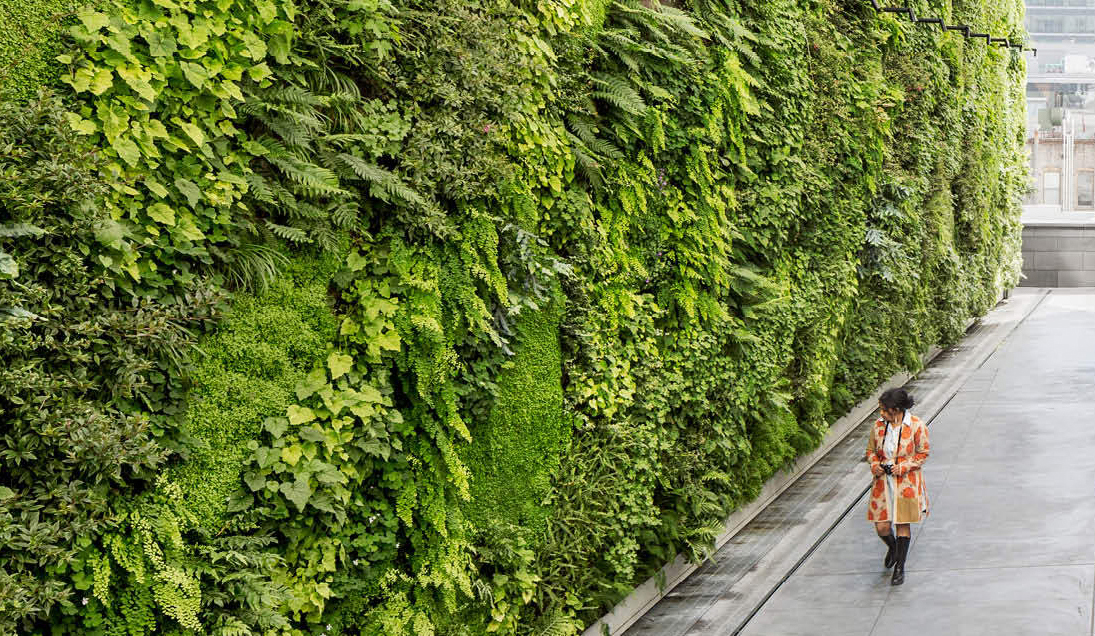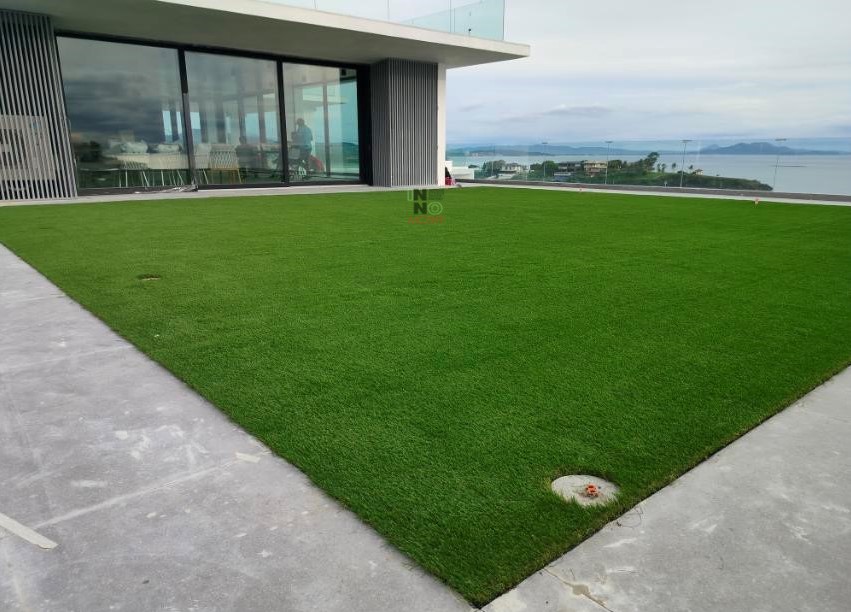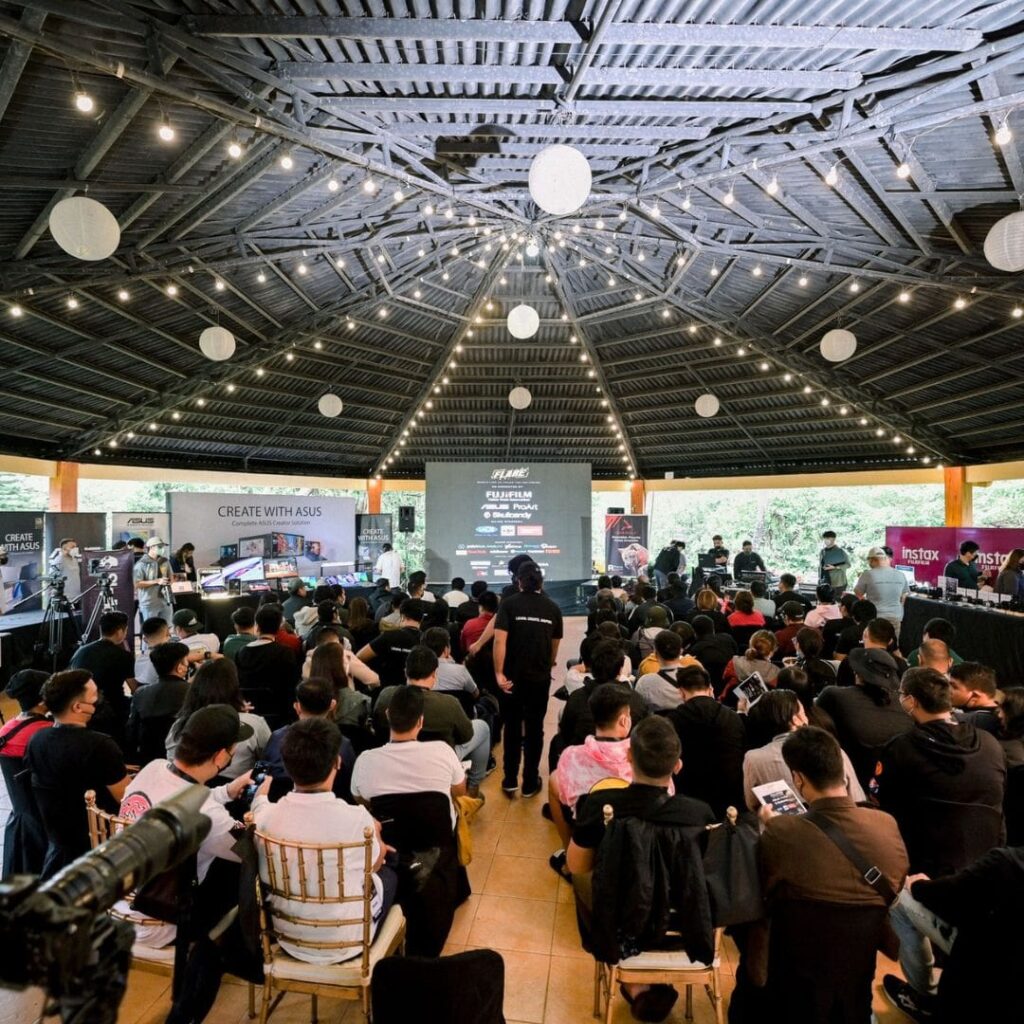Understanding the Concept of a Vertical Green Wall System
A vertical green wall system is a living architectural feature designed to bring nature into built environments by integrating vegetation directly onto walls or vertical structures. Unlike traditional gardens that occupy horizontal space, this system utilizes vertical surfaces, making it ideal for urban areas with limited land. It combines modern technology, smart irrigation, and design creativity to create a living wall that not only beautifies but also benefits the environment. The system can be installed indoors or outdoors, depending on the architectural requirements and environmental conditions. Vertical green walls have become symbols of eco-conscious design, representing a shift toward greener, more sustainable lifestyles. As cities grow denser, this solution helps restore the balance between nature and urban living by reconnecting people with greenery. The growing popularity of this innovation reflects a global commitment to sustainability and aesthetic transformation in modern architecture.
Components That Make Up a Vertical Green Wall System
A vertical green wall system is made up of several essential components that work together to sustain plant life and ensure long-term performance. The structure typically includes a sturdy framework that supports the plants and planting panels or trays where the vegetation grows. An efficient irrigation and drainage system is a key feature, delivering water and nutrients while preventing oversaturation. The choice of plants depends on whether the installation is indoors or outdoors—shade-loving species like ferns and pothos thrive indoors, while sun-tolerant plants like succulents and grasses are best for exteriors. Growth media, such as felt layers, hydroponic substrates, or soil blends, provide the foundation for plant roots to anchor and absorb nutrients. Automation can be integrated through timers and sensors to maintain optimal moisture and nutrient levels. Together, these components create a self-sustaining ecosystem that combines design elegance with environmental functionality.
Environmental and Health Benefits of a Vertical Green Wall System
Installing a vertical green wall system brings a wide range of environmental and health benefits. One of its most important advantages is its ability to improve air quality by absorbing pollutants and releasing oxygen. The plants act as natural air filters, reducing dust and volatile organic compounds within indoor environments. Another key benefit is energy efficiency—green walls act as insulation, helping maintain indoor temperatures and reducing the need for artificial cooling. They also contribute to sound insulation, minimizing noise pollution in busy city areas. From a wellness perspective, being surrounded by greenery reduces stress, improves focus, and enhances overall mood. Studies have shown that incorporating plants into workspaces and residential areas increases productivity and fosters creativity. By fostering biodiversity and supporting pollinators, vertical green walls help restore micro-ecosystems that contribute to the planet’s ecological health.
Aesthetic and Functional Value in Modern Architecture
Architects and designers increasingly view vertical green wall systems as essential design elements that merge art and ecology. These installations enhance the aesthetic appeal of any space, turning bare walls into vibrant living canvases. They are also highly functional, offering insulation, noise reduction, and air purification benefits. In commercial settings, green walls create a strong brand impression, signaling corporate responsibility and sustainability. Residential applications include patio features, living room accents, or balcony installations that bring tranquility into homes. Urban planners use them to transform gray, concrete-heavy spaces into living ecosystems that promote relaxation and community pride.
Examples of how vertical green walls add value include:
- Creating biophilic office spaces that boost employee wellness
- Enhancing retail storefronts with lush, eye-catching facades
- Improving building efficiency through natural insulation
- Providing privacy screens and natural barriers in open areas
- Supporting eco-friendly certification goals like LEED
By combining form and function, green walls represent the next evolution in sustainable urban design—where beauty and purpose meet harmoniously.
Installation Process and Key Considerations
Setting up a vertical green wall system requires proper planning, design expertise, and professional installation. The process starts with a site assessment to determine sunlight exposure, humidity, and structural capacity. Once the design is finalized, installers select suitable materials for the framework, ensuring stability and durability. The next step involves integrating irrigation and drainage systems to provide consistent hydration without water waste. Lighting conditions are crucial, especially for indoor walls, as plants need adequate illumination to thrive. Designers must also consider air circulation, as poor ventilation can lead to mold or plant stress. The installation itself involves mounting panels, placing plants, and connecting irrigation systems for automated operation. Regular maintenance such as pruning, nutrient replenishment, and pest control keeps the wall healthy and vibrant throughout the year.
Cost Factors and Long-Term Value
The cost of a vertical green wall system varies depending on several factors, including wall size, plant species, materials used, and technology integration. While the initial investment may seem significant, the long-term advantages outweigh the costs. Green walls lower energy bills by providing natural insulation, reducing heating and cooling expenses. They also increase property value and make spaces more attractive to tenants or buyers. Many governments and municipalities offer incentives or tax deductions for eco-friendly building features, making the investment even more practical.
Typical cost considerations include:
- Structural materials and framework design
- Irrigation and automation systems
- Choice of plants and growth media
- Installation and maintenance services
- Replacement and seasonal plant updates
Over time, the system’s ability to save energy, improve air quality, and elevate property aesthetics delivers a strong return on investment, making it a smart choice for both homes and businesses.
Smart Technology Integration in Vertical Green Wall Systems
Technology plays a major role in maintaining and improving the efficiency of a vertical green wall system. Modern installations often include automated irrigation and monitoring systems that ensure plants receive the right amount of water and nutrients. Sensors track environmental conditions like humidity, temperature, and light exposure, sending data to a central system for analysis. Some advanced systems are equipped with IoT integration, allowing remote monitoring and control via mobile devices. These features not only reduce maintenance costs but also minimize water waste and prevent plant stress. Smart lighting solutions mimic natural sunlight cycles, enhancing plant growth in indoor environments. With data-driven insights, property owners can optimize maintenance schedules and detect issues before they escalate. This combination of nature and innovation creates a truly sustainable and intelligent green infrastructure.
Common Challenges and How to Overcome Them
Like any living system, a vertical green wall system comes with challenges that require attention and care. One common issue is pest infestation, which can be managed with natural repellents and regular inspection. Ensuring proper sunlight is another challenge, especially in shaded areas, but can be solved through artificial lighting solutions. Structural concerns such as water leakage or drainage failure can be prevented through proper design and quality materials. Seasonal changes may affect plant health, requiring replacements or rotations based on climate.
Effective solutions include:
- Regular maintenance and inspection schedules
- Using high-quality materials resistant to corrosion and mold
- Incorporating smart irrigation systems for precision watering
- Selecting hardy plant species suitable for the specific environment
- Partnering with experienced installers and horticultural experts
With proper planning and proactive care, these challenges can be easily managed, ensuring the longevity and beauty of the green wall.
The Role of Vertical Green Walls in Sustainable Urban Development
Vertical green walls play a vital role in shaping sustainable cities of the future. They support eco-friendly construction practices by reducing carbon emissions, improving air quality, and mitigating the urban heat island effect. As global populations shift toward urban living, green infrastructure becomes essential in balancing growth and sustainability. Vertical gardens are featured in LEED-certified buildings and other sustainability programs that promote environmentally responsible design. They also encourage communities to adopt greener lifestyles by showing that urban environments can coexist with nature. The rise of vertical farming and green facades is transforming how cities approach environmental challenges. By integrating green walls into architecture, urban spaces become more livable, breathable, and resilient to climate change.
Frequently Asked Questions (FAQ)
How long does it take to install a vertical green wall system?
Installation typically takes between one to four weeks, depending on the wall size, design complexity, and structural preparation.
What are the best plants for indoor vertical gardens?
Shade-loving plants such as pothos, ferns, philodendrons, and peace lilies thrive well indoors.
How much maintenance does a green wall require?
Most systems require light maintenance every few weeks, including pruning, checking irrigation, and replacing unhealthy plants.
Can a vertical green wall system be installed on any surface?
Yes, as long as the surface is structurally sound and can support the system’s weight. Proper waterproofing and reinforcement may be needed.
What are the most common mistakes to avoid when setting up a vertical garden?
Overwatering, poor lighting, and choosing incompatible plant species are common mistakes. Proper design planning helps prevent these issues.
Takeaway
A vertical green wall system is more than an aesthetic feature—it is a powerful solution that redefines how we experience urban spaces. It enhances air quality, supports wellness, reduces energy costs, and reconnects people with nature in an increasingly concrete-driven world. As smart technology and sustainable design continue to evolve, vertical green walls stand as living proof that innovation and environmental responsibility can grow together—literally. For architects, homeowners, and city planners alike, embracing this system means building a greener, healthier, and more sustainable future.











